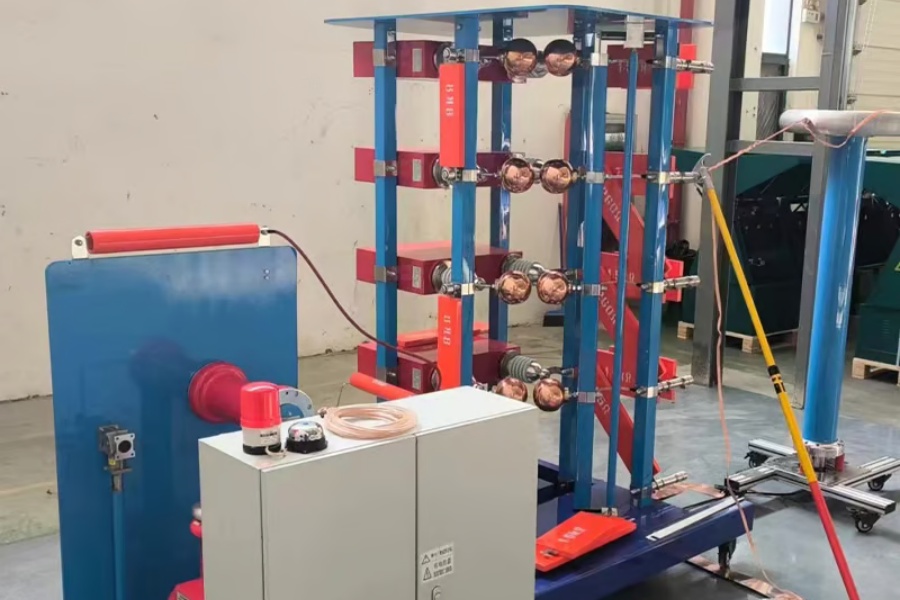In the electrical industry, testing and measuring equipment is of utmost importance. One such equipment is the impulse test voltage. In this article, we will define what impulse test voltage is and why it is important in the electrical industry.
Paragraph 1: What is impulse test voltage??
Impulse test voltage is a type of high voltage test used to check the ability of electrical equipment to withstand over-voltage surges. This test is done by simulating lightning strikes and other transient voltages that a device may be subjected to during operation. The test measures the voltage that a device can withstand without breaking down, and it is usually done on high voltage equipment like transformers, motors, and cables.
Paragraph 2: Why is Impulse Test Voltage Important?
Impulse test voltage is important because it ensures the safety and reliability of electrical equipment. Electrical equipment can be subjected to different kinds of transients like lightning surges, switching overvoltages, and other types of impulses. These transients can cause damage to the equipment and result in power outages, fires, and even accidents. The impulse test voltage helps to identify any weaknesses in the insulation system of the equipment and allows for necessary repairs or replacements.
Paragraph 3: How is Impulse Test Voltage Conducted?
The impulse test voltage is conducted by applying a high voltage impulse to the equipment under test. The impulse is usually specified in terms of the voltage level and the waveform. The voltage level is determined by the rated voltage of the equipment, while the waveform is specified by the relevant international standards. The test is conducted in a laboratory environment where the equipment can be safely isolated from the power system.
Paragraph 4: What are the Different Types of Impulse Test Voltage?
There are mainly three types of impulse test voltage – positive, negative, and combination waveform. The positive and negative waveform tests simulate the different polarities of impulse voltage that the equipment may experience during operation. The combination waveform test is a combination of both positive and negative waves and is used to simulate more severe surge conditions.
Paragraph 5: What are the Parameters of Impulse Test Voltage?
The parameters of impulse test voltage include the waveform, polarity, rise time, amplitude, and duration. These parameters determine the severity of the impulse wave and the ability of the equipment to withstand it. The parameters are specified by the relevant international standards, and the test is conducted accordingly.
Paragraph 6: What are the Standards for Impulse Test Voltage?
The international standard for impulse test voltage is IEC 60060-1:2010. This standard specifies the test methods for high-voltage and high-current testing. It also specifies the waveforms, parameters, test procedures, and acceptance criteria for different types of electrical equipment. The standard is used by testing laboratories and equipment manufacturers around the world.
Paragraph 7: What are the Benefits of Impulse Test Voltage?
The benefits of impulse test voltage include improved safety and reliability of electrical equipment, reduced downtime, and enhanced performance. By identifying and addressing any weaknesses in the insulation system of the equipment, the test reduces the risk of failure and the associated safety hazards. The test also ensures that the equipment can operate reliably under different transient conditions and minimizes the risk of unplanned downtime or power outages.
Paragraph 8: What are the Challenges of Impulse Test Voltage?
The challenges of impulse test voltage include the complexity of the test equipment, the need for specialized skills and knowledge, and the cost of testing. The high voltage levels and waveforms associated with the test require specialized equipment that is expensive and requires regular calibration and maintenance. The test also requires skilled technicians with expertise in high voltage testing methods and safety procedures.
Paragraph 9: How Often Should the Impulse Test Voltage be Conducted?
The frequency of impulse test voltage depends on the type of equipment and the voltage level. High voltage equipment like transformers and cables may require annual testing, while lower voltage equipment like motors and generators may require testing every three to five years. The frequency of testing may also depend on the level of exposure to transient voltage and other environmental factors.
Paragraph 10: Conclusion
In conclusion, impulse test voltage is a critical aspect of the electrical industry. It ensures the safety and reliability of electrical equipment, reduces the risk of failure and downtime, and enhances performance. By understanding what impulse test voltage is and how it is conducted, we can appreciate its importance and ensure the proper maintenance and testing of our electrical equipment.

